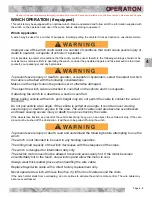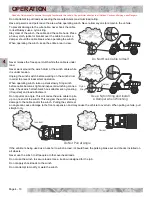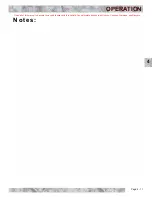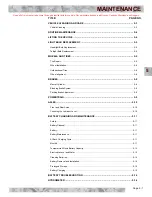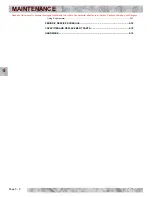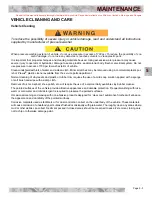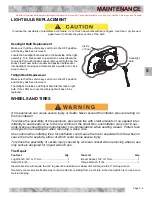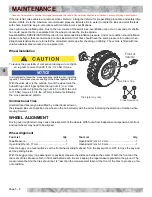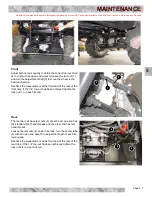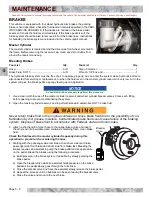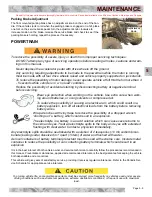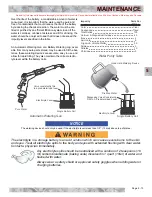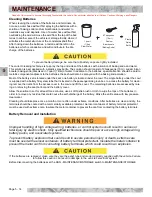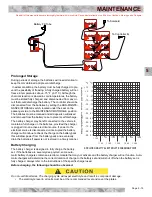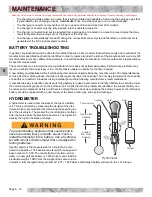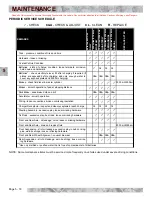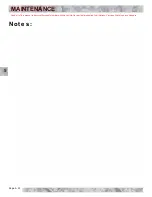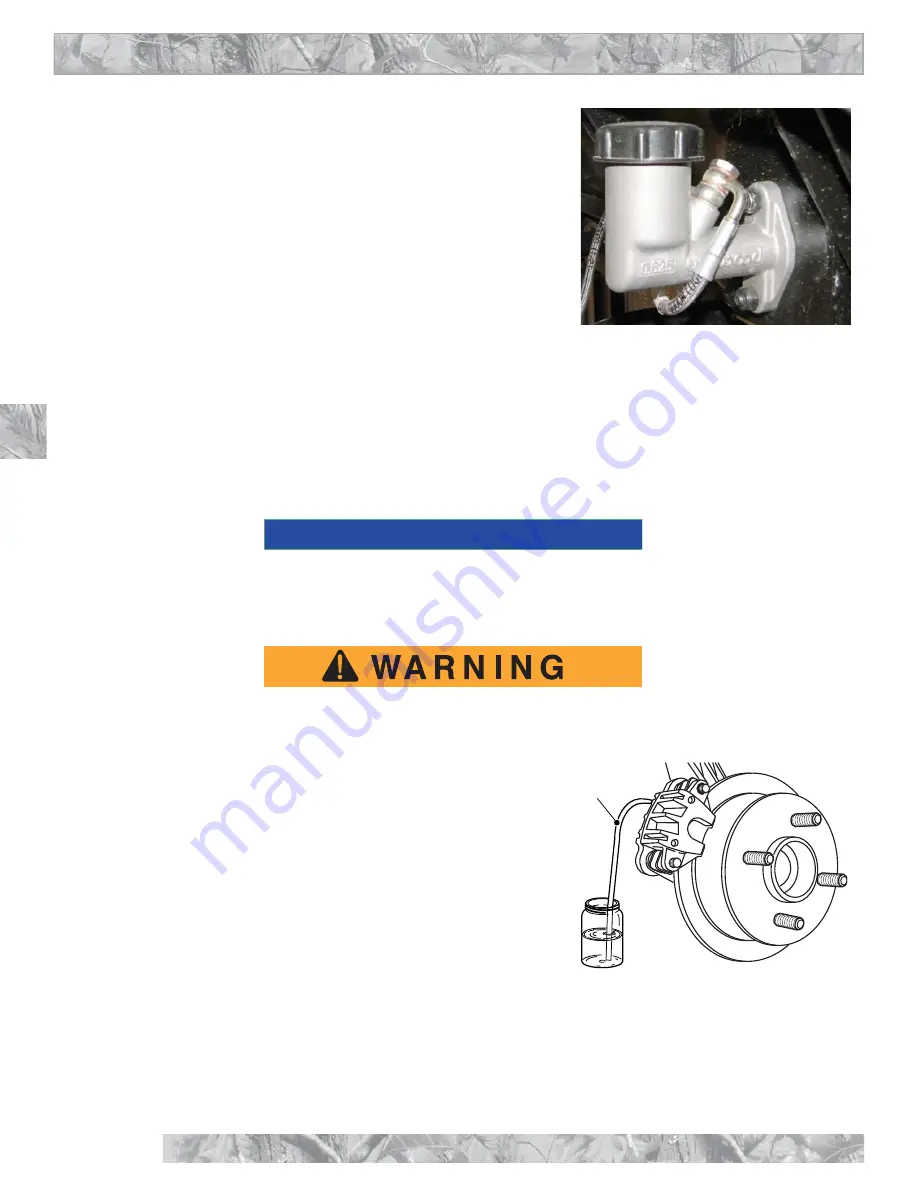
MAINTENANCE
Read all of this manual to become thoroughly familiar with this vehicle. Pay particular attention to all Notices, Cautions, Warnings, and Dangers.
Page 5 - 8
5
BRAKES
This vehicle is equipped with four wheel hydraulic disc brakes; the parking
brake is hand operated. Check the fluid level at intervals specified in the PERI-
ODIC SERVICE SCHEDULE; if fluid leaks are noticed or the brake pedal
seems soft check the fluid level immediately. If the brake pedal is soft, the
brake system should be bled to remove air from the brake lines. Instructions
for bleeding the brake system are included in the vehicle repair manual.
Master Cylinder
The master cylinder is located behind the driver side front wheel, mounted to
the frame. Before removing the reservoir cap, clean any dirt or debris from
around the reservoir and cap.
Bleeding Brakes
Tool List
Qty.
Tool List
Qty.
Hose..................................................................... A/R
Clean Container......................................................... 1
Brake Fluid, DOT 3 .............................................. A/R
Wrench, 1/4” box end ................................................ 1
The hydraulic brake system must be free of air to operate properly. Air can enter the system when hydraulic parts are
disconnected for servicing or replacement, or when the fluid level in the master cylinder reservoir is very low. Air in the
system will give the brake pedal a spongy feeling upon application.
An assistant will be necessary to perform this procedure.
1. Use a clean cloth to wipe off the master cylinder reservoir and wheel cylinder bleeder valves. Clean each fitting
before opening to prevent contaminating the system.
2. Open the master cylinder reservoir and top off with standard automotive DOT 3 brake fluid.
Never return brake fluid to the original container or reuse brake fluid due to the possibility of con-
tamination by dirt, grease, moisture. Contaminated brake fluid could cause failure of the braking
system. Dispose of brake fluid in accordance with Federal, state and local codes.
3. Attach a short length of clear hose to the caliper bleed valve and insert
the other end into a suitable clean container containing fresh, clean brake
fluid.
Check the fluid level in the master cylinder frequently during this
operation to prevent air from entering the lines.
4. Starting with the passenger side rear brake, then driver side rear brake,
passenger side front brake and driver side front brake last. Bleeding the
brakes requires an assistant to pump the brake pedal and keep pressure
on the pedal. Bleed the brakes using the following procedure:
a) Build pressure in the brake system, if possible, by slowly pumping the
brake pedal.
b) Open the bleeder valve while an assistant holds pressure on the brake
pedal as the pedal slowly goes through the full stroke.
c) Close the bleeder valve and have the assistant slowly release the brake pedal.
d) Repeat the process until no bubbles can be seen leaving the bleeder valve.
e) Close the valve and move to the next brake.
NOTICE
Bleeder
Hose




